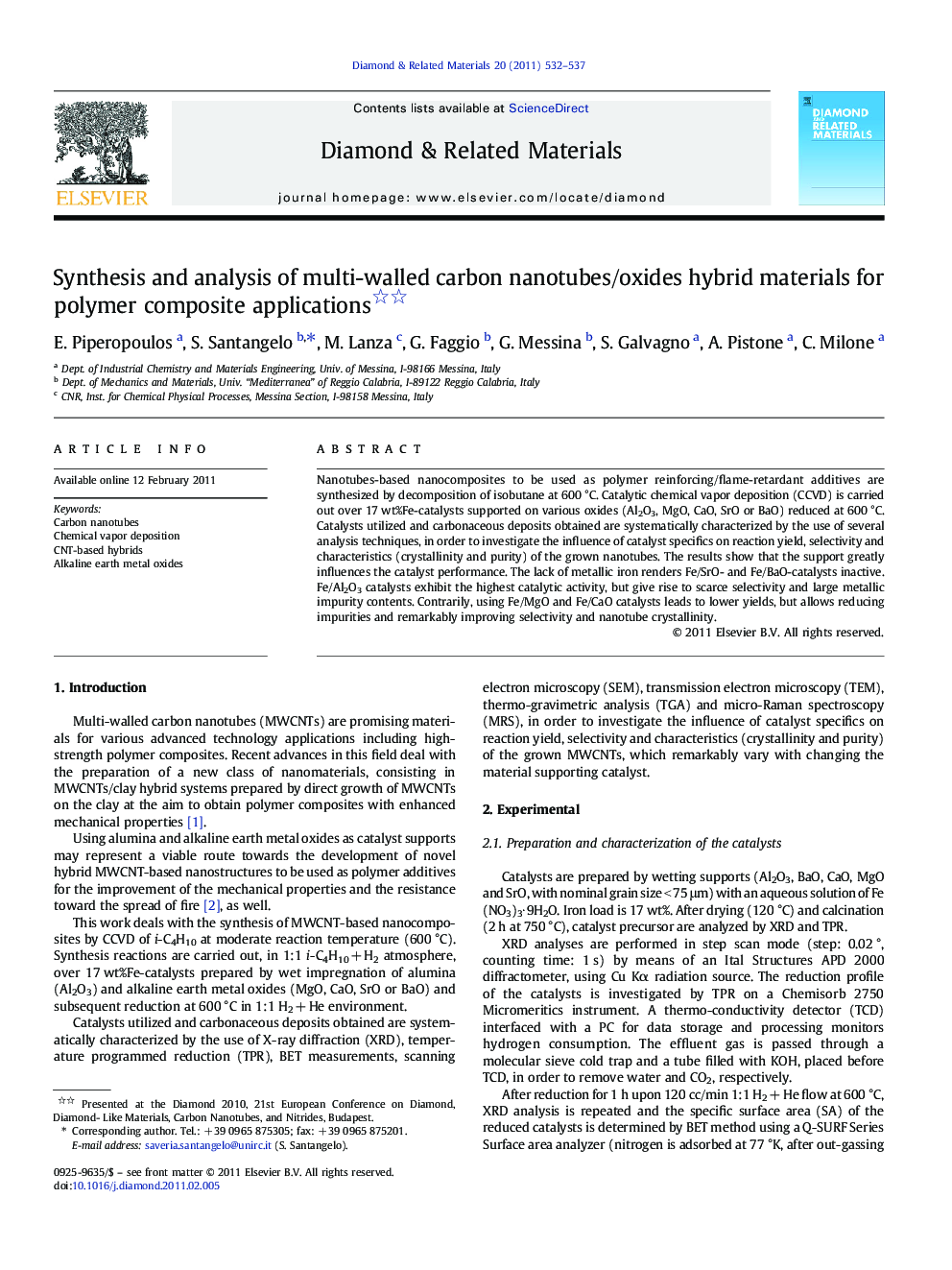| Article ID | Journal | Published Year | Pages | File Type |
|---|---|---|---|---|
| 702008 | Diamond and Related Materials | 2011 | 6 Pages |
Nanotubes-based nanocomposites to be used as polymer reinforcing/flame-retardant additives are synthesized by decomposition of isobutane at 600 °C. Catalytic chemical vapor deposition (CCVD) is carried out over 17 wt%Fe-catalysts supported on various oxides (Al2O3, MgO, CaO, SrO or BaO) reduced at 600 °C. Catalysts utilized and carbonaceous deposits obtained are systematically characterized by the use of several analysis techniques, in order to investigate the influence of catalyst specifics on reaction yield, selectivity and characteristics (crystallinity and purity) of the grown nanotubes. The results show that the support greatly influences the catalyst performance. The lack of metallic iron renders Fe/SrO- and Fe/BaO-catalysts inactive. Fe/Al2O3 catalysts exhibit the highest catalytic activity, but give rise to scarce selectivity and large metallic impurity contents. Contrarily, using Fe/MgO and Fe/CaO catalysts leads to lower yields, but allows reducing impurities and remarkably improving selectivity and nanotube crystallinity.
Research Highlights► CNT-based hybrids are synthesized by CVD of isobutane at 600 °C. ► 17wt%Fe-catalysts supported on Al2O3, MgO, CaO, SrO or BaO are utilized. ► Fe/SrO- and Fe/BaO-catalysts are inactive due to the lack of metallic iron. ► The most active Fe/Al2O3 catalysts involve worse selectivity and large Fe-impurities. ► Selectivity and CNT crystallinity improve by using the less active Fe/CaO catalysts.
